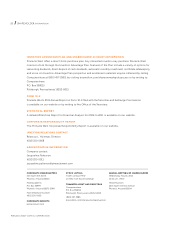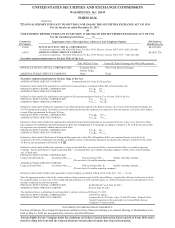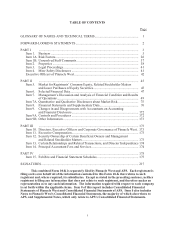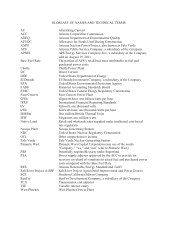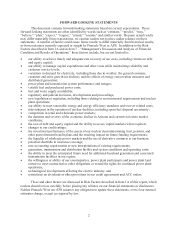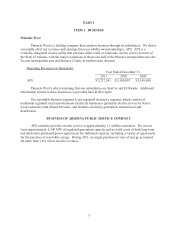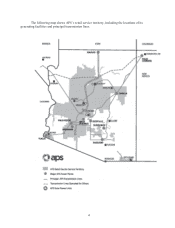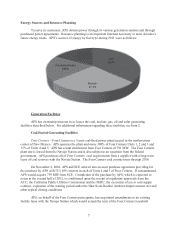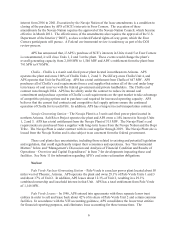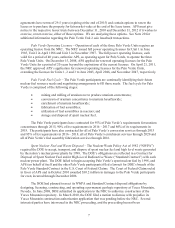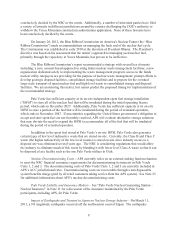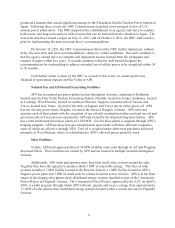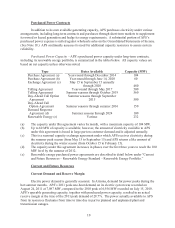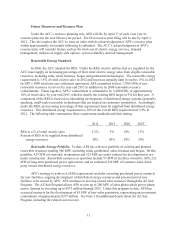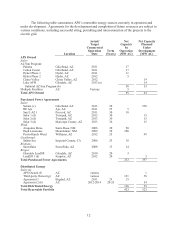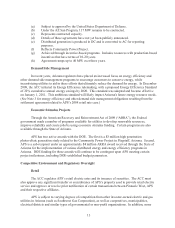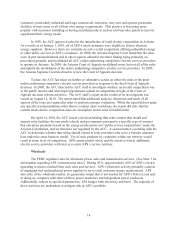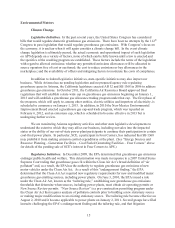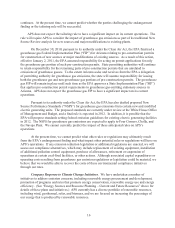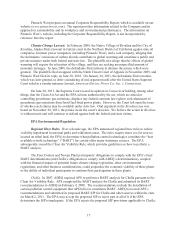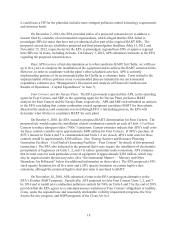APS 2011 Annual Report Download - page 32
Download and view the complete annual report
Please find page 32 of the 2011 APS annual report below. You can navigate through the pages in the report by either clicking on the pages listed below, or by using the keyword search tool below to find specific information within the annual report.8
conclusively decided by the NRC or the courts. Additionally, a number of interested parties have filed
a variety of lawsuits in different jurisdictions around the country challenging the DOE’s authority to
withdraw the Yucca Mountain construction authorization application. None of these lawsuits have
been conclusively decided by the courts.
On January 26, 2012, the Blue Ribbon Commission on America's Nuclear Future (the “Blue
Ribbon Commission”) made recommendations on managing the back end of the nuclear fuel cycle.
The Commission was established in early 2010 at the direction of President Obama. The President’s
directive was based on his assessment that the nation’s approach to managing used nuclear fuel,
primarily through the repository at Yucca Mountain, has proven to be ineffective.
The Blue Ribbon Commission’s report recommended a strategy with several key elements
including: a new, consent-based approach to siting future nuclear waste management facilities; a new
organization dedicated solely to implementing the waste management program; access to the funds
nuclear utility ratepayers are providing for the purpose of nuclear waste management; prompt efforts to
develop geologic disposal facilities, consolidated storage facilities and to prepare for the eventual
large-scale transport of spent nuclear fuel and high-level waste to consolidated storage and disposal
facilities. We are monitoring this matter, but cannot predict the proposed timing for implementation of
the recommended strategy.
Palo Verde has sufficient capacity at its on-site independent spent fuel storage installation
(“ISFSI”) to store all of the nuclear fuel that will be irradiated during the initial operating license
period, which ends in December 2027. Additionally, Palo Verde has sufficient capacity at its on-site
ISFSI to store a portion of the fuel that will be irradiated during the period of extended operation,
which ends in November 2047. If uncertainties regarding the United States government’s obligation to
accept and store spent fuel are not favorably resolved, APS will evaluate alternative storage solutions
that may obviate the need to expand the ISFSI to accommodate all of the fuel that will be irradiated
during the period of extended operation.
In addition to the spent fuel stored at Palo Verde’s on-site ISFSI, Palo Verde also generates
certain types of low level radioactive waste that are stored on-site. Currently, the Class B and Class C
waste (the higher radioactivity of the low level wastes) is stored on-site since industry access to a
disposal site was eliminated several years ago. The NRC is considering regulations that would allow
the industry to eliminate much of this waste by blending it with lower level Class A waste so that it can
be disposed of at a facility such as the one Palo Verde utilizes in Utah.
Nuclear Decommissioning Costs – APS currently relies on an external sinking fund mechanism
to meet the NRC financial assurance requirements for decommissioning its interests in Palo Verde
Units 1, 2 and 3. The decommissioning costs of Palo Verde Units 1, 2 and 3 are currently included in
APS’s ACC jurisdictional rates. Decommissioning costs are recoverable through a non-bypassable
system benefits charge (paid by all retail customers taking service from the APS system). See Note 23
for additional information about APS’s nuclear decommissioning costs.
Palo Verde Liability and Insurance Matters – See “Palo Verde Nuclear Generating Station –
Nuclear Insurance” in Note 11 for a discussion of the insurance maintained by the Palo Verde
participants, including APS, for Palo Verde.
Impact of Earthquake and Tsunami in Japan on Nuclear Energy Industry – On March 11,
2011, a 9.0 magnitude earthquake occurred off the northeastern coast of Japan. The earthquake


